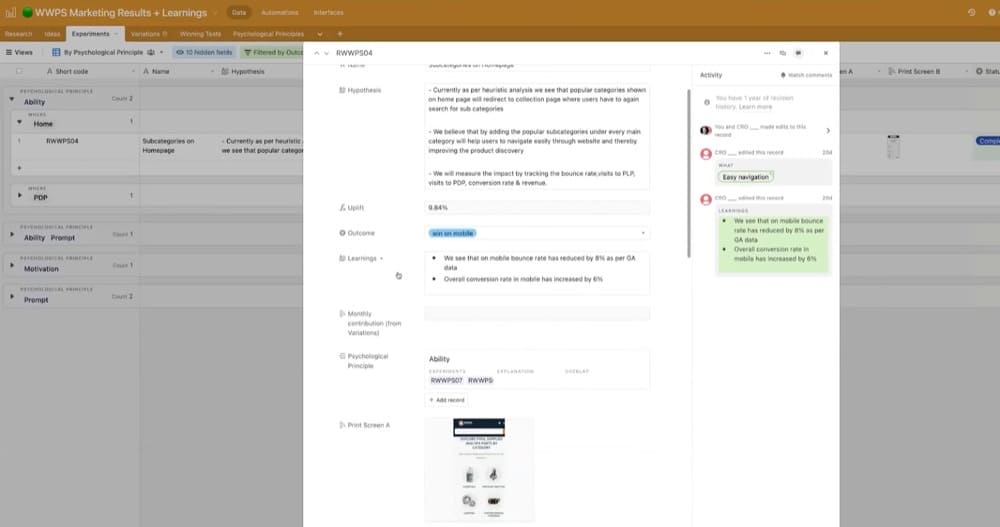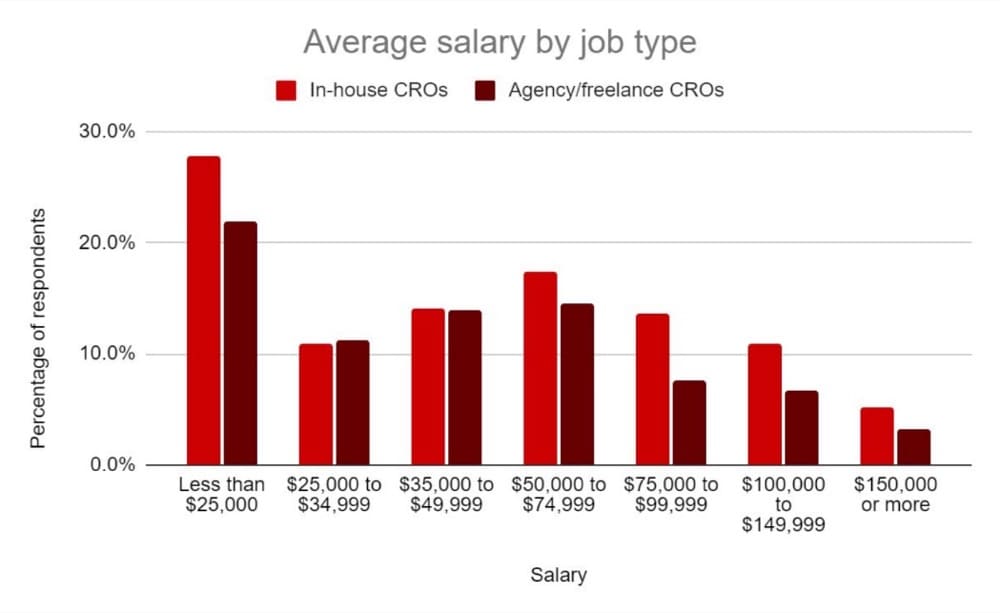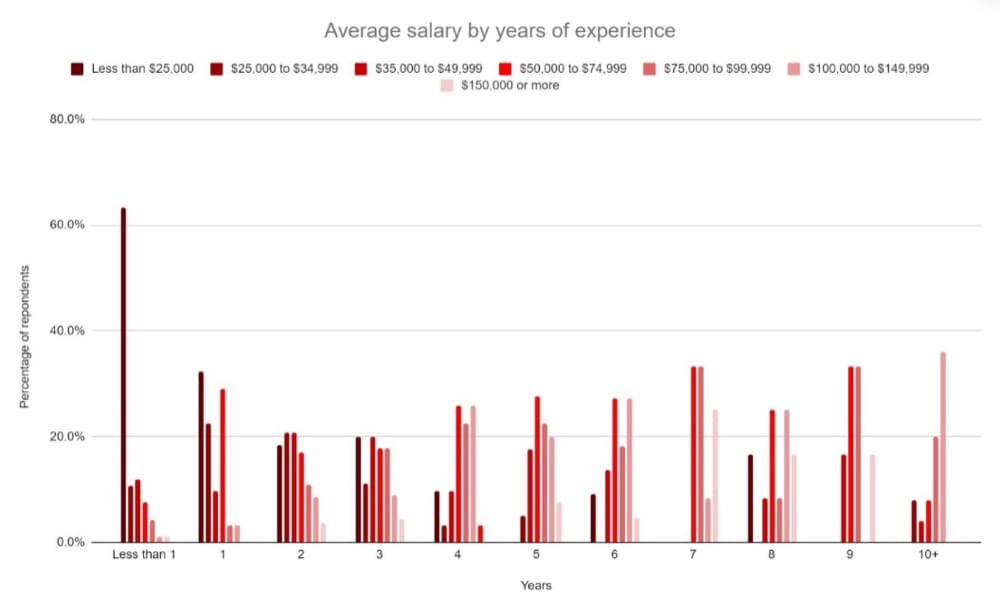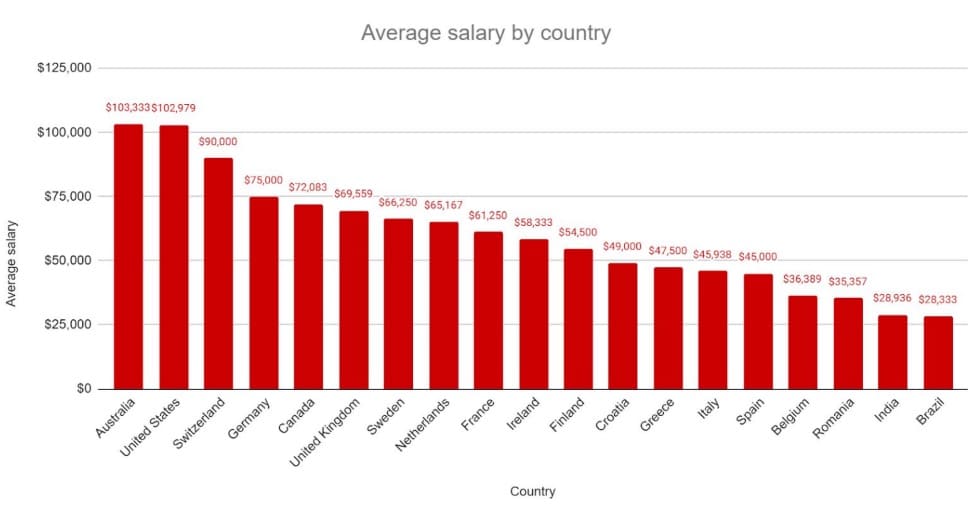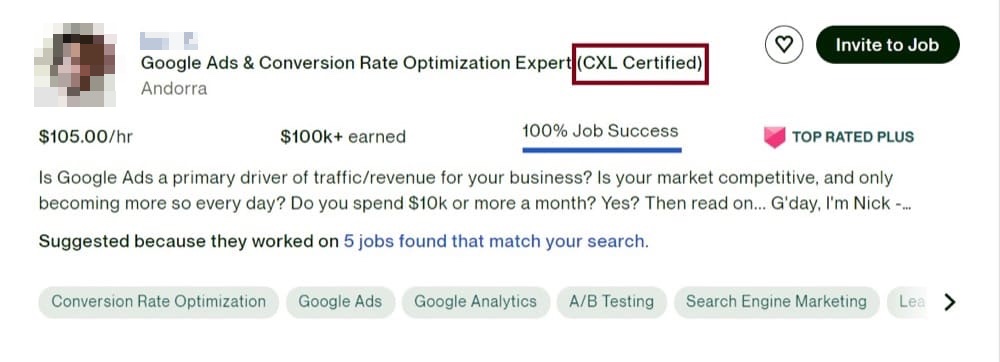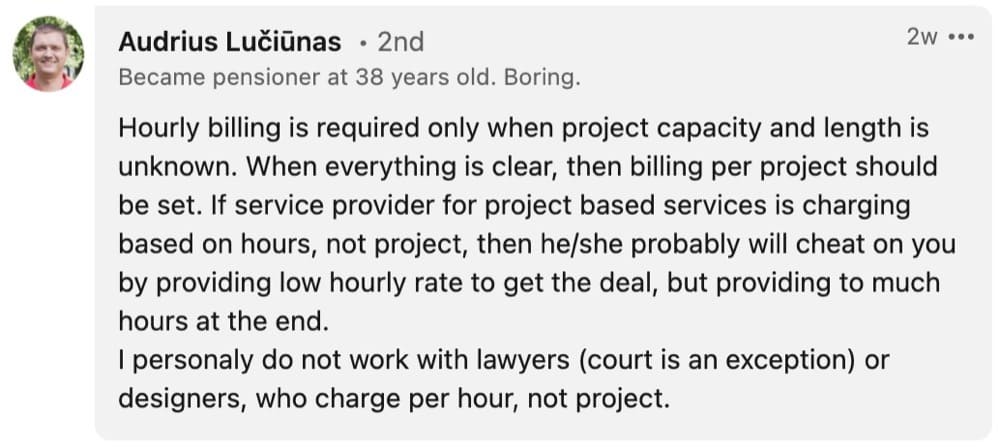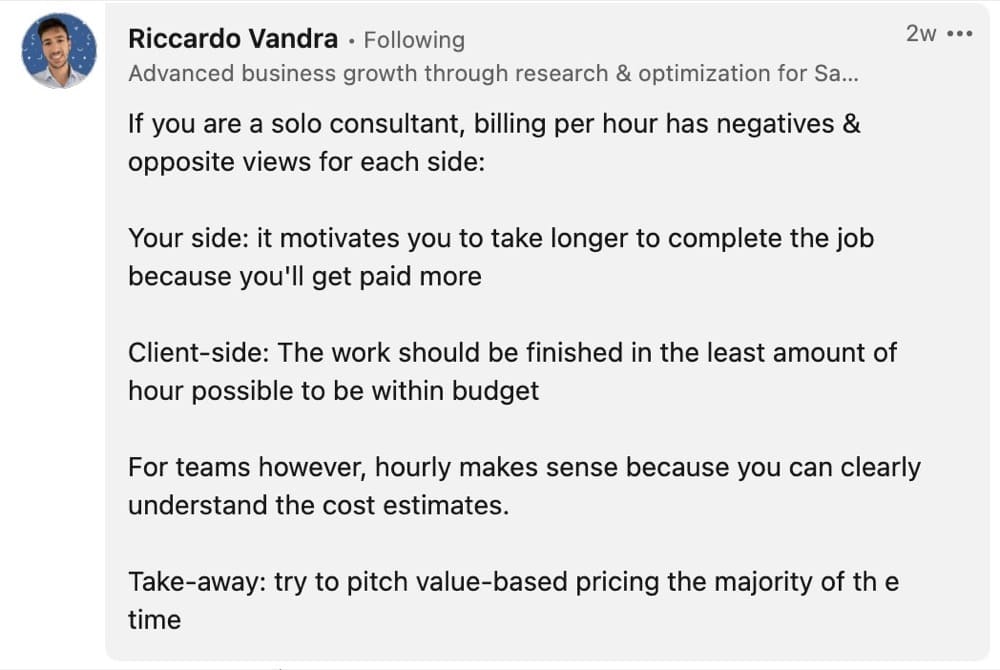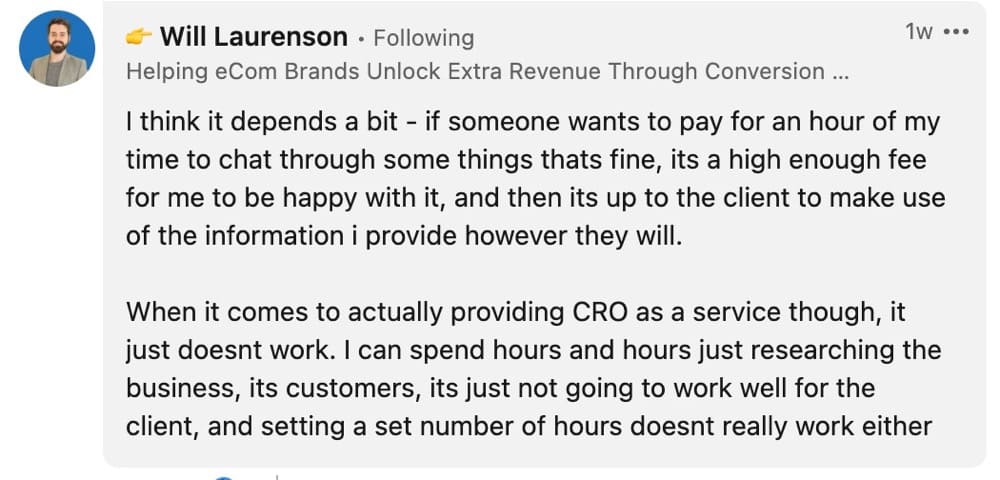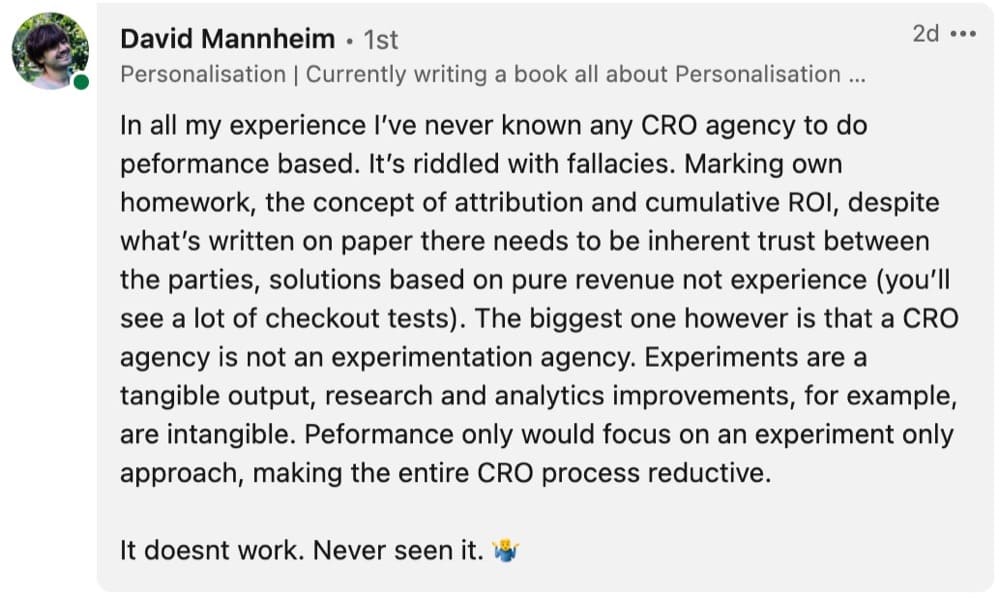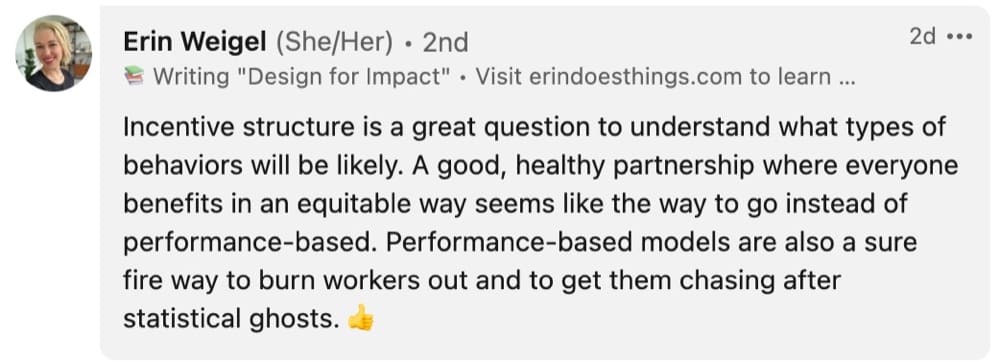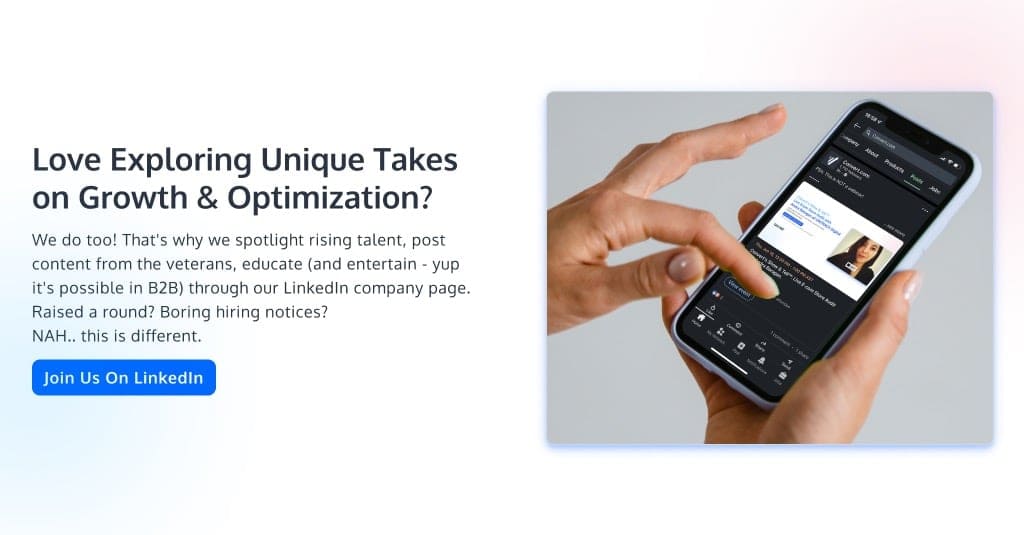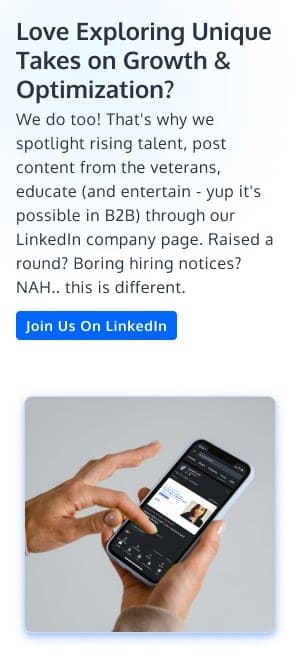How Much Should a CRO Agency Charge? 8 Experts Who’ve Walked the Walk Chime In

Synopsis:
There are 3 major conversion rate optimization (CRO) agency pricing models:
- Hourly project model
- Monthly subscription retainer model
- Variable incentive model
Within the monthly subscription retainer model, the usual CRO agency pricing per month is:
| $2,000 | $16,000 | $30,000 |
| Low | Average | Premium |
Within the hourly project model, the usual costs for the services of a CRO agency are:
| $200 | $500 | $2,500 |
| Low | Average | Premium |
And a conversion audit one-time fee:
| $2,500 | $3,500 | $4,500 |
| Low | Average | Premium |
Asking for money can be daunting for most folks. Are you charging too little or too much that you risk losing a client?
If you’re building a CRO agency, you’d want to know the exact price for your unique mix of value, experience, and work quality. Or at the least maximum amount to charge that clients will be happy to pay.
In this article, we’ll talk to experts in the CRO community, dive into numbers and projections from various sources, and show you the model or format in which most CRO agencies price their services and offerings. In the end, you’ll be in an informed position to calculate your CRO agency prices.
-
First Things First — What Should You Have in Order Before You Get to Pricing?
-
Key Takeaways from 3 Things CRO Agencies Must Know to Succeed
- 1. Get the Necessary Skills Dialed In
- 2. Work On Your Niche/Branding
- 3. Get that First Client
- 4. Understand Service Tiers and What to Charge
- Shortcut to Learning: Hire a Consultant
- Finding Clients for Your CRO Agency
- The CRO Agency Team Structure
- Tool Stack When Starting Your CRO Agency
- Should You Give Guarantees to Attract New Clients?
- How to Convince and Show Value to Prospects
- Start and Maintain a Portfolio of Test Wins the Easy Way
-
Key Takeaways from 3 Things CRO Agencies Must Know to Succeed
- Benchmarks & Ballparks
- 3 Different Pricing Models for CRO Agencies. And What To Be Aware Of
First Things First — What Should You Have in Order Before You Get to Pricing?
As much as it sounds thrilling, we can’t just jump right into the money. If you’re in this to earn well (and I’m sure you are), then you need to get the basics first. We have the Founder and Head of Analytics + CRO of Rednavel Consulting, Ryan Levander, to guide us through that.
A couple of weeks back, we hosted a session (plus an open mic Q&A) with Ryan so he’ll share what he knows that can help CRO experts start and grow an agency. It was titled, “3 Things CRO Agencies Must Know to Succeed”.
Among the 3 things, he talked about “service tiers and what to charge”. Check out the video and key takeaways below, especially what you need to put in place before getting to the pricing part:
Key Takeaways from 3 Things CRO Agencies Must Know to Succeed
Why are we discussing these first? Before you get into pricing, you need to do your due diligence. This pays off in the long run and makes pricing less daunting than it usually is. You get to express and deliver incredible value while positioning your agency to earn its worth.
Plus, the other option is undercharging — and that has its consequences.
Remember, if you don’t feel (initially) uncomfortable articulating your quote, you are probably undercharging!
Let’s get into it…
1. Get the Necessary Skills Dialed In
This is actually item 0.5 — an expert-recommended prerequisite to the next 3 things. In this, Ryan explained that before you niche down (which is thing #1), you need to be really good at conversion rate optimization.
Experience is one thing, proficiency is another. You might not have experience, but you need to be proficient.
Don’t “open up shop” until you have validated your skill level. You can do that by getting the opinion of others about your proficiency in CRO. Others, in this case, could be clients you did free work for or yourself (with evidence, of course) working on your own sites.
Be several levels better than your client’s normal. This is how you create raving evangelists for your agency. That referral from an excited past client will help you break into and excel in this relatively small industry.
2. Work On Your Niche/Branding
There are various niches to focus on. There’s ecommerce, SaaS, hospitality, etc. Find one that aligns with your pre-existing experience or interests and focus on it.
But why should you focus on who you are, how you are positioned, and what you can deliver? Because niching down and establishing both credibility and trust is a much-needed precursor to value.
“Be meaningful and specific, don’t be a wandering generality”. You have to go narrow so that you’re someone’s exact answer and not competing with everyone.
Only when your promise lands in a way that resonates with the prospect’s (potential client’s) pain points can you command a premium price, oftentimes simply because you’ve spent time to understand their world and its challenges.
3. Get that First Client
You won’t have sufficient insight to design the right CRO agency pricing strategy without having your first client. When starting out, Ryan advises that money should be a small part of the equation.
Yes, you have to pay the bills but your focus, in the beginning, should be on working with your first client to learn if people love what you have to offer.
Add referral incentives for the client in your contract. Maybe even add a required case study/social sharing clause into the contract.
4. Understand Service Tiers and What to Charge
We go into details about this below. But here’s the gist of what Ryan discussed while he was on the hot seat…
He mentioned 4 different CRO agency pricing models:
- Fixed – This helps the team focus on testing and not on how they get paid in the end.
- Pay per performance – This is okay when starting out and trying to prove your value but not a great long-term strategy.
- Hourly (per test run) – He would prefer not to charge this way because, ironically, it doesn’t put any value on your time.
- Base + incentivized (where client and agency goals are aligned) – This is the “your success is my success” kind of pricing. It helps clients reach their goals, while you get paid your base pay plus extra when you hit those goals.
Then came the Q&A open mic session. I’ve picked the ah-ha! answers to help you see, from an experienced CRO agency owner’s perspective, how to become profitable.
After this, we have benchmarks and ballparks where we dive into those numbers and projections from our research.
Shortcut to Learning: Hire a Consultant
You can spend up to 80 hours going through courses but you can get to work faster if you find someone who is 2 years or more ahead of you and have live conversations with them.
You’ll most likely pay for their time and that could be more expensive than a CRO mini-degree, but it’ll save you a ton of time to get the ideas and knowledge you need to handle the project right in front of you.
Finding Clients for Your CRO Agency
When asked, between LinkedIn and cold email, which is more profitable for getting new clients? Ryan said your approach depends on the way you want to be approached. But make sure you’ve exhausted your network first before going out into the world.
A great start is to tell someone you know about your agency and ask for someone else who needs your services.
Finally, learn about your audience and where they like to hang out. Then become an expert on that favorite hangout spot.
When you get that first client, don’t try to have more than one client right away. Focus on making the first one a home run. Also, you’ll be inefficient on the first project, so make sure to document the entire process. Use that opportunity to develop a standard operating procedure (SOP) while working on the project. Keep it manageable and replicable.
The CRO Agency Team Structure
This is still part of the things to figure out before deciding how to charge, which will depend on the size of your team, how it’s structured, and how many tests you want to accomplish per month.
On a small team like Ryan’s, there are two designers focused on concepts/ideation and research. There are two developers — one responsible for building tests and the other for QA. Then, there’s the person handling account management, client communication, and project management.
You may want to add someone who handles analytics. All in all, you’ll have to account for their hourly rates in certain pricing models.
Tool Stack When Starting Your CRO Agency
Ryan advises you to start with free tools, mostly the Google tools like Google Analytics and Google Optimize. Later you can move on to paid tools like Convert Experiences. Paid tools usually come with support which removes the need to google for answers to your problems.
But pay attention: It’s best practice to focus less on the tools and more on your attitude and ability to use them.
For example, Microsoft Clarity is a free tool for heat mapping and session recording but it doesn’t integrate well with Google Optimize.
Should You Give Guarantees to Attract New Clients?
It’s common to find agencies promising uplifts to attract clients but Ryan advises not to do that. The only way to make these guarantees work is when you have full control over the outcome and most times, you don’t.
The closest you can get to full control is having really tight language in your contracts. Some clients will find that off-putting.
How to Convince and Show Value to Prospects
Here’s a better way to get your foot in the door when selling your CRO services, especially to prospects that don’t know the value of CRO:
Ryan talked about a dashboard his agency has on Data Studio. All he has to do is get read-only access to a prospect’s Google Analytics. This dashboard is designed to hook in and reveal where the potential client is right now and their current conversion rate.
It then shows what a 0.5% increase in conversion rate (CR) and 3% in average order value (AOV) means to the prospect’s net revenue. Then, this is extrapolated to 1 year. You can calculate modest wins like this to show how CRO can help clients in the next 90 days but also show them the potential losses in dollars if they aren’t testing.
Go to the money as fast as possible. Oftentimes, the clearest picture to paint is the one that involves dollar signs ($$$).
Start and Maintain a Portfolio of Test Wins the Easy Way
If your agency is set up with clear cut-out roles, the project managers will be responsible for documentation. At Rednavel Consulting, they document ruthlessly with Airtable.
They document for clients — to show what they did and what they learned. That is a great place to pull case studies from. The over-detailed and transparent case studies are always better.
Document while you’re working on the project. It is too hard to recall what you did and build a case study from memory or pieces of data scattered across various tools.
Now to the numbers…
Benchmarks & Ballparks
Take everything you read here with a grain of salt. Because there is no right or wrong approach to pricing your optimization and experimentation services. We will look at a number of sources to get tangible dollar values, regardless.
But to reiterate one last time: how much you charge is completely up to you, the financial freedom you seek, and what you want out of your lifestyle as a freelance CRO expert or agency in the monetary sense.
CRO Job Compensation Data
In the blog “The True Cost of Conversion Optimization Today (with Detailed Compensation Data)”, by The Good, you can see that the strategist alone (the person who mines data and comes up with hypotheses) can set a company back by anywhere between 113,000 and 153,000 USD a year. This is but a slice of the CRO pie.
You know best that your work has to be supported by a front-end developer who understands the unique challenges of A/B test builds, a UX expert, a data analyst, and probably a program manager. The costs add up. In-house CROs can pinch pockets by upwards of $500,000 in salaries alone. And we aren’t even counting the setbacks due to rookie mistakes.
In our personal data crunching, we’ve found that agencies secure 21% more wins than teams that go at it alone in an in-house setup.
This isn’t an apples-to-apples comparison, but underscore your calculations with this data to arrive at better-informed and fairer rate conclusions.
The CRO Industry Landscape — Salaries by Job Type, Experience, and Location
No look at agencies and their structure is complete without broader context or the industry at large. This comes in the form of CXL’s State of Optimization reports. The one developed with Convert (2020) is revealing in terms of average CRO salaries by job type, years of experience, and location.
For the next set of data point(s), we’ll look at freelancers on the most popular freelance job marketplace…
Freelance Rates
Freelancers aren’t agencies but it’s possible to imagine from here on out what the agency pricing will look like.
Let’s head over to Upwork — the handy dandy talent platform every business hits up when looking to make a hire. If you search for “Conversion Rate Optimization” (since experimentation doesn’t return great exact matches), you’ll see 3 types of results:
- Folks who are well and truly doing optimization (at least going by their profile and work philosophy, we can make an educated guess). There are a couple of CXL-certified professionals as well. They charge between $80 and $200 an hour.
- Folks who think they are doing CRO: We are not here to point fingers and laugh. But it is apparent that the focus is on managing ads with a hint of Ecommerce CRO added to the mix. Their hourly asks can be as low as $20 an hour.
- Finally, there are folks who are working in optimization but whose bread and butter is speed optimization, and the technical aspects of what can be better described as search engine optimization.
You already know this… but we will go ahead and say it anyway. Don’t commoditize experimentation on the basis of arbitrary deliverables like the number of tests run or worse, the number of hours worked. Yes, test velocity is important, but it should not be what you lead with. What you lead with is solving the business’s problems and adding strategic innovation to their portfolio. Tests run is a by-product of this resolve, not the other way round.
There’s more…
More Recent Numbers from Invesp’s Blog
In the blog post, “How much does it cost to hire a conversion optimization agency?” by Invesp we learned:
The top-tier conversion optimization agencies (a solid track record and at least 7 years of CRO experience) start at $10,000/month. Most of these agencies charge around $16,000 per month with some charging upwards of $30,000 per month.
The mid-tier CRO agencies (good track record but with less experience in the field) will charge anywhere from $6,000 to $8,000 per month.
The lowest-tier CRO agencies (starting out in CRO with less dedicated staff) will charge anywhere from $2,000 to $5,000 per month.
Khalid Saleh, Invesp
Then, last (and probably the least because the data here is dated)…
Numbers from Quora Responses
Most refrain from giving exact dollar amounts to the questions for good reasons. So many variables influence the actual pricing as we’ve discussed above. Instead, they shared their pricing models.
However, there were two answers that gave exact amounts:
- On a retainer basis: $4,000 (low-end), $12,000 (average), and $25,000 (expensive end) per month, while a one-time fee for conversion audit can cost $2,500 to $4,000. (Year: 2016, source)
- Hourly: CRO offerings start from $125 per hour or $2500 per month (Year: 2016, source)
As you research how much you should charge, you will see that audits are a good way to get a foot in the door. ONTRACK Digital’s Andra Baragan would charge about $4500 for an in-depth CRO audit in June 2022.
3 Different Pricing Models for CRO Agencies. And What To Be Aware Of
Just to clarify, we are not advocating a particular approach. We are not saying one works better than the other. We would like to let our experts do the talking.
That said, we dive into the 3 models with expert input along the way:
MODEL 1: Hourly Project Model
This is the easiest way to price your agency work — get paid for every hour spent working on the client’s project. It has its pros and cons, as Chris Goward of WiderFunnel laid out in this Quora answer. It’s 7 years old but still a great resource.
[The hourly project model] is a traditional agency approach, where the client pays for each hour of the agency’s service. Most lawyers and big ad agencies charge this way and many CRO agencies use this traditional model.
The benefit here is you only pay for the hours of work the agency applies to your work. Most companies are familiar and comfortable with this type of arrangement.
The downside is that there’s no incentive alignment. The agency is not incentivized to work efficiently and may, even unintentionally, add unproductive hours to the work. The incentives are least aligned in this model.
Chris Goward, WiderFunnel
The general consensus among agency owners seems to be that the hourly pricing model is great when starting out, but when you’ve established a reputation and have a proven track record of great work, you’ll want to move away from it.
….(Also) it’s always important to roughly know how many hours the work takes to deliver. Hourly prices seem more precise in that regard. But they can be challenging because the more experienced you are at something, the easier and faster you can usually do it. This experience can be reflected in a higher rate per hour, but sometimes this doesn’t make sense. Especially when you’re working with a lot of different team members on a project. Plus: what if you spend some time on automation, where and how do you include admin work like that? Each choice comes with advantages and disadvantages for the team, but also for the sales process.
Lucia van den Brink, Speero
Lukas Petrauskas has an interesting take on hourly rates in the CRO space:
The comments are hot as well, with personal experiences outlining the benefits and issues with hourly pricing for agency services:
Plus, we can’t name names, but the best experts in the field often charge upwards of $1500 per hour of consultation.
MODEL 2: Monthly Subscription Retainer Model
While the hourly project model incentivizes time spent working, the monthly subscription retainer model gives the agency more flexibility to focus on generating results instead.
However, some agencies still justify the retainer amount by allocating hours against the monthly fee. Although that makes the accountants happy, it is counter-productive to aligning incentives.
This model works best when the agency is goal-oriented and agrees with the client on the goals to be achieved with the retainer. A long-term subscription allows the agency to take a strategic view of the engagement and work in partnership with the client.
Chris Goward, WiderFunnel
So, even the monthly retainer, which arguably is the most popular CRO agency pricing model out there, has its perks and downsides. While for you, the owner, it means predictable income, it’s challenging to get clients who are unfamiliar with CRO to sign up for this.
But there’s a way to get them onboard:
We always charge a fixed monthly retainer, based on how many tests we run per month. You want to take into consideration the value you will bring to the client and aim to deliver at least 3-5X return on their costs with CRO.
Ask the client what would a 5% uplift mean to them per month and build your offer based on that.
That being said, you need to take into account the objectives of the optimization/experimentation program. Experimentation is not always about increasing profits right away so look at what the cost of opportunity would be for your client if they would just implement stuff randomly, without backing it with data.
The worst you can do is charge hourly as that tends to work against both the client and you.
Andra Baragan, ONTRACK Digital
Also, if the client’s business isn’t fully established yet and nobody has an idea of how long the project will take to complete, hourly pricing might be more suitable. Because talking about the length of engagement is a big part of the retainer model.
First off, it’s very important to talk about the length of the engagement, the best thing would be a minimum of 6 to 12 months of engagement so you can actively show the results of your CRO Efforts.
Working with someone on CRO in a shorter term could be very detrimental to the performance.
When speaking about the pricing structure I generally prefer a retainer approach that is value-based instead. I’d only do performance if the scope of the project is smaller (like a simpler landing page optimization project) because the precise projection on CRO metrics could be very difficult to compute.
Riccardo Vandra, Uplifted Consulting
Another downside is the risk of delivering way more value inside the agreed-upon timeframe than you’re being paid for. It happens.
Working with retainers can give some space to breathe, but also: if you don’t set boundaries (i.e. number of tests between 1 – 3 per month for example) you and the team can easily over-deliver.
Lucia van den Brink, Speero
If you go this route, the following things have to be considered:
- Performance parameters (what do you deliver a month? Is it test velocity, is it uplifts, is it a mix of both?) We understand that the real worth of experimentation far exceeds the total of its parts. But when you are trying to land a client, you can’t restrict yourself to blue-sky thinking, you have to quantify.
- Retainers should ideally be long term. It doesn’t make sense to be on a retainer for a month, generate a bunch of ideas (basically audit a site for less than what you would charge for your audit), and then not follow up on the execution. This is where the “experimentation does not work” chants stem from.
- Over delivery. Where do you draw the line in terms of providing value to the client? Do you ride the wave of a promising test and keep on iterating despite the “quota” for the month being hit? How do you balance personal profitability with the ultimate good of the client and the business?
MODEL 3: Variable Incentive Model
Variable incentive model answers the question about aligning agency goals with client goals. Remember “your success is my success”? In this model, the clients and agency share the risks.
The CRO agency is incentivized to hit specific goals that benefit the client’s bottom line. But clients have to be wary of this one, though. It can be unpredictable.
The downside is that, if the agency does their job and achieves their goals, the client will end up paying more than in a defined monthly subscription. It’s more expensive, but also more directly aligned. Keep in mind, however, that money is not the only way to align incentives. As Dan Pink described in his book, Drive, monetary performance incentives are often not necessary and can sometimes be counter-productive. Use them wisely.
Chris Goward, WiderFunnel
This is where it gets heated. There are a number of big question marks against the concept of charging for outcomes or results.
For example, Simon Girardin of Conversion Advocates says:
The format CRO agencies charge their clients tells a lot about them. The performance based format offers to de-risk the partnership by promising to pay only for the results generated, so under-performing programs wouldn’t be expensive for a client.
On the contrary, a strong performing program might be very expensive with good performance. That’s what I call charging based on the outcome.
The retainer format is not as flexible and provides a clear scope of work with a set and defined price. A client will pay the same price no matter the performance of the program. That’s what I call charging based on the output. An agency may promise to launch 12 tests and 6 research deliverables in a quarter, for example.
Charging on outcome is unpredictable and will create fluctuations that are hard to forecast on both sides. Charging on output is predictable, and scalable. Going from 9 tests per quarter to 12 is easy to scope. Inversely, going from 15 tests to 12 is also easy to adjust.
There is a huge pitfall for agencies that choose to charge on outcome, with a performance based pricing model. They are incentivized to chase after results. As a client, it may be challenging to identify if the tests being launched are money cows, or if they are really the most strategic experiments possible. An agency may be tempted to misinterpret or temper statistics to favor more wins and more revenue in their pockets. Their time might be chosen to be invested in shipping more tests, rather than establishing a growth process.
I believe that agencies who choose to charge based on outcome are trying to solve the wrong problem. CRO should always aim to optimize the experience for customers, not results for the program.
If the problem is earning client trust, then they need to show their process, explain the research road map and show case studies. If the problem is clients doubt their ability to deliver, then they need to hype their team and show case studies. If the problem is a price barrier, then they should show ROI projections. Maybe they can consider offering the first months at a lower retainer price with a set raise so that the barrier to entry is reduced.
Simon Girardin of Conversion Advocates
When Simon took to LinkedIn to extend his opinion of performance-based and retainer pricing models for CRO agencies, folks in the industry had a couple of things to say:
Ben Labay (Speero) also raises the question of perverse incentives and making measures the target.
We talk about (potentially) gaming metrics in our in-depth guide on A/B testing metrics.
Even 7 years ago, the idea of diverting the attention of traffic (and thus revenue) from other offers to give an impression of a temporary conversion lift was around. Check this out:
From a contractual perspective, it’s hard to accurately measure your contribution. On any website more complex than a sole landing page, you may make more users go through the funnel but are those the same quality of users like the standard audience that typically converts? Did you divert their attention from some other revenue stream (opportunity cost)?
You also have to keep in mind that if an experiment says a “20% lift” it actually means that with a 95% statistical significance you made a change that improved things. By how much? It’s more like a bell curve around the 20% but it isn’t necessarily 20%. Finally, don’t even think about looking at the organization’s bottom line over time as there are other effects at work other than your work as a consultant.
But that doesn’t mean there are no takers for performance-based compensation. Done right, especially in tandem with retainers, they can work.
I believe payment can be a mixed format of retainer and performance. The retainer gives the agency the resource it needs to perform the necessary research, which can be quite time-consuming if you’re mining reviews or speaking with customers, and designing & building A/B tests.
While performance should be seen as a bonus for tests that show positive incremental review gains, if the client is growing because of the CRO efforts, why shouldn’t the CRO team benefit from that? This performance should be calculated over short periods of time though, e.g. the incremental revenue from a test over a 30-day period – any longer than this doesn’t make sense as that value may not be true a month or two later, revenue could be higher or lower depending on seasonality.
But what’s important to remember is that the benefits of CRO aren’t just the results of A/B tests. The research and insight gathered aren’t solely used for the purposes of ‘CRO’ or A/B testing as most people think of it, it should be distributed to allow for optimization across every aspect of the business. It can be used to improve email marketing, advertising, and even products.
Will Laurenson of Customers Who Click
Whatever You Do, Don’t Promise Ridiculous Uplifts
Ryan said this in the video and we emphasized it in the key takeaways but here it is again: Don’t guarantee ridiculous uplifts for any reason.
It (CRO) is a process, not a solution,
Ben Labay, via the CXL blog
Focus on quality inputs and outputs from the experimentation machine, and you are golden.
Here’s why promising ridiculous uplifts and structuring pricing models around them is a recipe for disaster:
- You don’t have the full picture and will (most likely) fall into the trap of unintentional bias.
- Time and chance — seasons change, and as they do, the forces that move conversion rates and AOVs change as well, and
- Eventual regression to the mean — ridiculous uplifts will shift closer to the average the next time you measure it
It’s better to focus on learning when talking about the value of your CRO services. Yes, the eventual uplifts will come, and sometimes the incredible ones too, but considering they aren’t guaranteed, it’s best to set the right expectations to avoid letting your clients down.


